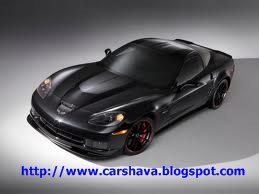The Chevrolet 100
The Beginning
In the freewheeling auto industry at the dawn of the 1900s, the maestro who created, then lost, General Motors bounced back to create his greatest automotive endeavor yet.
In the year Chevrolet was born, there were 270 auto companies operating in the United States. Although Chevrolet was started by one of the best-known and most prolific names in the fledgling industry, its survival was not ensured. But Chevrolet not only endured, it prospered. It went on to become one of the few American auto brands to reach the century mark, and it was the number-one-selling brand in the United States in the majority of those years. Herewith, a look at the 100 cars, people, technologies, events, and milestones that have marked Chevrolet's 100 years.
1. Billy Durant
Chevrolet was the creation of William C. Durant, who founded General Motors but by 1911 had been tossed out. Looking to get back into the car business, he incorporated the Chevrolet Motor Car Company on November 3, 1911. (2) He started two other car companies that year and two more the next. Those other makers were soon subsumed by Chevrolet, which Durant envisioned as a low-priced brand that would take on Ford. By 1915, Durant and his proxies had succeeded in acquiring enough General Motors stock that Durant regained (tenuous) control of GM. He then engineered a stock swap which meant, in effect, that the Chevrolet company acquired General Motors (3). Back in the saddle at GM, he went on a buying spree (Fisher Body, Dayton Engineering, and Frigidaire, among others) but was caught out by the 1920 recession. He left GM and Chevrolet forever in December of that year.
4. Louis Chevrolet
Born in Switzerland, Louis Chevrolet spent his boyhood in France before emigrating to North America at age twenty-one. Chevrolet earned a name for himself working on the Buick racing team, and he drove Buicks to victory at the nascent Indianapolis Motor Speedway in 1909 and 1910. Billy Durant wanted to tap Chevrolet's racing notoriety for his start-up car company. In addition to lending his name to the enterprise, Chevrolet would design the new car. He finished the design and demonstrated the car for the press in late 1912, after which he departed for France and an extended vacation. When he returned, he was upset with the cheaper models that Durant had added, but the breaking point was his smoking. Durant hated Chevrolet's habit of smoking a cigarette and letting it hang on his lip. He thought Chevrolet, as an executive, should take up cigars. Enraged at being told how to live, the hot-tempered Chevrolet quit the company. He later designed a couple of Indy-winning racing cars and started the short-lived Frontenac Motor Company.
5. 1912 Chevrolet Six Type C Classic
The first-ever Chevrolet was the only one designed by its namesake. Riding on a 120-inch wheelbase and powered by a 299-cubic-inch six-cylinder engine, it was a premium vehicle (costing more than $2000) and not at all what Billy Durant had envisioned for Chevrolet.
6. The Bow-Tie emblem
The now-familiar logo was first applied to a Chevrolet in 1914. As Durant told it, he'd seen the design on the wallpaper of a hotel room in Paris.
7. The Chevrolet Four-Ninety
In 1915, Chevrolet at last had a direct competitor to the Model T: the Four-Ninety. It cost $490, which also happened to be the price of a Model T. (Henry Ford retaliated by dropping the T's price by $50.)
8. The first Chevrolet truck appeared in 1918. Trucks slowly became an important, if not highly visible, aspect of Chevrolet's business. It wasn't until decades later -- 1989, to be exact -- that Chevy trucks began outselling Chevy cars and accounting for an outsize majority of the brand's profits.
9. Formed in 1919, GMAC greased the financial wheels of the auto industry. Financing allowed dealers to have more cars on hand, and it freed buyers from having to save up the purchase price of a car -- a significant sum even for buyers of low-priced cars. Chevrolet's ability to let customers buy a car "on time" gave it an important advantage over Ford, where the very idea was anathema to Henry Ford.
10. The Detroit-based Campbell-Ewald advertising agency placed its first ad for Chevrolet in 1919 and became the brand's agency of record in 1922, beginning an agency/client relationship that would continue until 2010.
























































